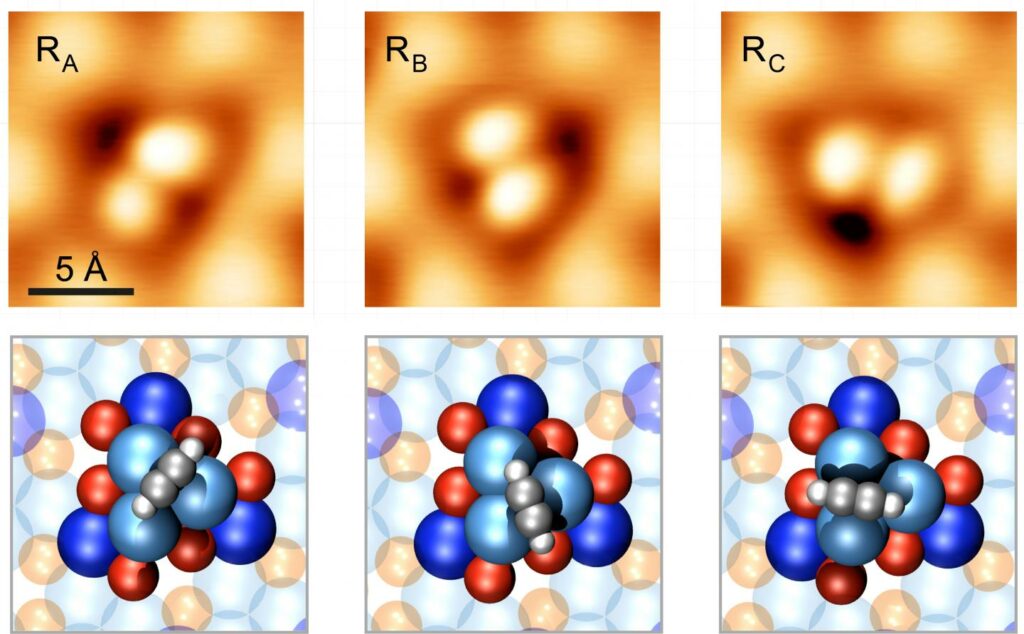
Swiss researchers have pushed machine miniaturization to the limit, after they devised a molecular motor out of just 16 atoms. The machine measures less than one nanometer — 100,000 times smaller than the width of a human hair.
The tiny engine that could
Like any large-scale motor, the 16-atom motor consists of a stator and a rotor. The rotor rotates on the surface of the stator in six possible different positions, although for it “to actually do useful work, it is essential that the stator allows the rotor to move in only one direction,” Oliver Gröning, head of the Functional Surfaces Research Group at the Swiss Federal Laboratories for Materials Science and Technology (EMPA), said in a press release.
During one experiment, the Swiss researchers spun the motor into motion, recording its behavior by scanning tunneling microscopy.
You can see the motor in action for yourself in the video below. The grey spinning unit is a molecule of acetylene, which is made of two carbon atoms and two protons. The blue and red atoms form a 12-atom crystal of palladium and gallium, which forms the base for the stator.
Getting the motor to perform work was obviously challenging. One of the biggest problems that researchers have had to face in the past is stabilizing the molecular rotor so it spins in only one direction.
To achieve stability, besides tinkering with the individual molecular units, the researchers also had to cool down the entire system to 17 degrees above absolute zero.
At this chilling temperature, the spinning motion could be controlled by applying an electrical current.
“The motor, therefore, has 99% directional stability, which distinguishes it from other similar molecular motors,” says Gröning.
And, according to Gröning, this behavior offers a glimpse into the transition from classical physics to the mysterious domain of quantum physics.
“The second law of thermodynamics states that entropy in a closed system can never decrease. In other words: if no energy is lost in the tunneling event, the direction of the motor should be purely random. The fact that the motor still rotates almost exclusively in one direction therefore indicates that energy is also lost during tunnel movement,” says Gröning.

The point of an electric motor is to provide work. However, harvesting kinetic energy from this molecular machine is not that straightforward. Someday, the researchers hope to better understand how the molecules in the machine interact in order to actually harvest tiny amounts of energy. Until then, this extraordinary display of molecular craftsmanship will be useful in probing quantum effects.
“The motor could enable us to study the processes and reasons for energy dissipation in quantum tunneling processes,” Gröning concluded.
The 16-atom motor was described in a paper published in the Proceedings of the National Academy of Sciences.



